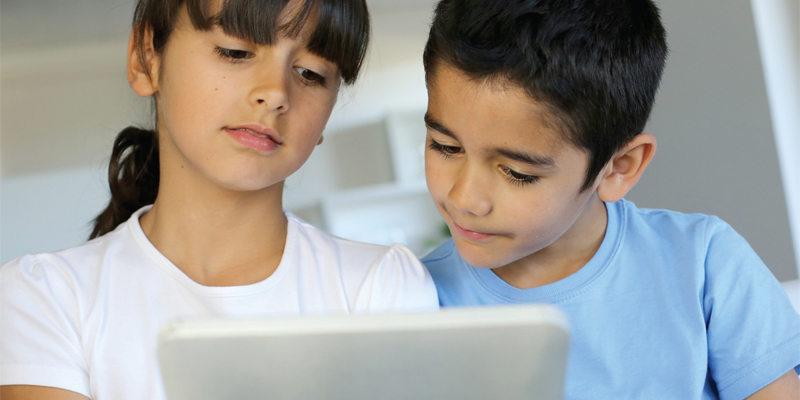So that children can take advantage of technology for learning

The children who started school in this decade are the children we refer to as digital native. Ocfom UK research shows that 6 year olds now have the same understanding of technology use as 45 year olds. So many families have tablets at home, that children are already media literate before they even enter primary school. On the other hand, you are also familiar with the advice of the experts to monitor the usage time of the device (gadget) for children. Regardless of the pros and cons, we cannot deny that our children are a generation of digital learners.
One of the logical consequences is that the way children learn today is very different from what we used to be. Digital technology is an essential part of their world. Children use them to connect with each other, even when they are far apart from time and place, to learn new skills and things they are passionate about. Learning is no longer limited to activities in the classroom, but becomes a widespread activity in cyberspace. Children can connect with other students and teachers outside of school, as well as experts in different parts of the world. Their access to learning resources has become very broad.
In order to learn to use digital technology really useful for children, there are some basic learning skills that must be mastered. One of them is known as media literacy. Far from being proficient in reading and writing, media literacy or media literacy is the ability to access, analyze, evaluate and create media. Children who have good media literacy can understand the complex messages they receive from television, radio, internet, newspapers, magazines, books, billboard commercials, movies, music, video games, etc.
The ability to communicate and collaborate is also more important than ever. Later, children will meet various people from various parts of the world. If he is incapable of communicating ideas in multiple ways, even though he can speak several languages, it may be pointless. Likewise with the ability to work together. To be able to work together in an environment that is plural and bound by time and space, he must have good empathy, courtesy, and tolerance.
Communication and collaboration skills are grouped in 21st century learning skills along with creativity and problem solving skills. One thing that stands out in the use of technology in learning is learning activities that shift from consuming and memorizing information to presenting and creating information. This requires creativity associated with these communication skills. Children can be productive using gadgets, for example by making short videos of what they learned in history lessons, or writing regularly to post on a blog.

